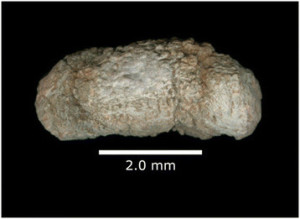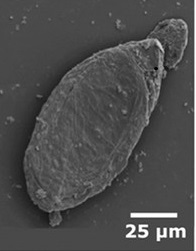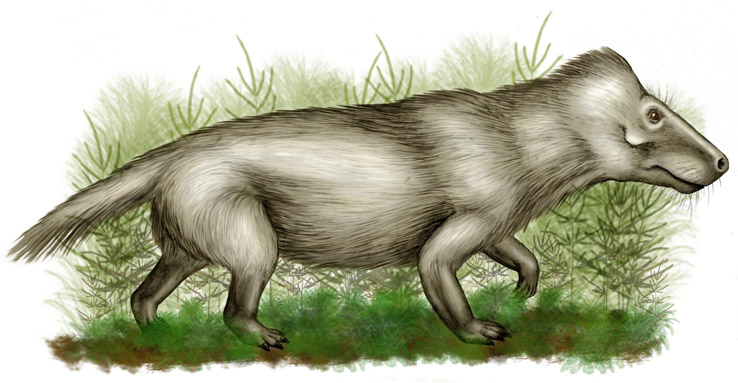
Exploring prehistoric parasites that plagued now extinct vertebrates (paleoparasitology) is an essential step in understanding modern host-parasite interactions and the evolution of parasitism. Furthermore, these interactions can provide additional information about dietary habits, climate and the ecology at that time.
Detection of eggs/ cysts of intestinal parasites in the faeces of infected animals is the gold standard for diagnosing numerous intestinal parasites. Hence, desiccated fossilised faeces or “coprolites” of extinct animals provide a useful tool for the investigation of parasites in extinct vertebrates.

To date, numerous parasitic helminths have been found in various mammals including unidentified nematode eggs in a giant sloth, Toxocara canis eggs in extinct hyena species and Ascaridae eggs in an early Cretaceous Iguanodon dinosaur coprolite.
Most recently, a 240 million year old nematode parasite egg was discovered in a coprolite thought to originate from prehistoric therapsid vertebrates called cynodonts. The studied coprolite was recovered at the Sίtio Cortado site in Rio Grande do Sul state, Brazil. Here, cynodont fossil remains were abundant and found in close association with the coprolites.
So how does one go about dissecting prehistoric poop? In this study, scrapings of the coprolite were dissociated in hydrochloric acid and then washed with water to a neutral pH, before examination under a microscope. This revealed the eggs of two species of nematode of the orders Ascaridida and Oxyurida. The first Ascarites rufferi, was determined to be a new species of ascarid that had previously been described by Silva et al, 2014 . The second is particularly significant because it is the oldest record of an oxyurid nematode and because cynodonts are considered proto-mammals. It is also a new species and was named Paleoxyuris cockburni, in honor of the founder of the Paleopathology Association, Aidan Cockburn.
The Cynodontia clade includes non-mammalian and mammalian vertebrates that first appeared across the world in the Late Permian. It is most likely that the coprolite belonged to herbivorous or semi-herbivorous species of Cynodontia, as host species of pinworm always consume large quantities of cellulose- with no exceptions. Species of Traversodontidae (herbivores identified by their flat-topped teeth covered with low ridges) were abundant at the site and so are likely to be the source of the coprolite. Oxyurida are unique in that they infect both vertebrates and invertebrates, so long as the host digests relatively large quantities of cellulose. Despite their vast host range, molecular data places Oxyurida in a monophyletic group.
The findings from this Brazilian site demonstrate the immense evolutionary diversification that has occurred from a clade that included both mammals and reptiles, to modern day humans. Such field studies, together with advances in molecular techniques, are essential for defining phylogenetic relationships.

George Poinar, a pioneer in paleoparasitology and the man who first popularised the idea of extracting DNA from fossilised insects, which went on to inspire Michael Crichton’s Jurassic park– is particularly excited about these findings. The “discovery of a pinworm egg in a mid-Triassic cynodont coprolite proves to be the oldest record of an oxyurid nematode. It fills a void, since while pinworms are considered to be one of the most primitive nematode groups, vertebrate fossils had been restricted to Holocene and Pleistocene deposits. Pinworms are an amazing group and one of the few with adults developing in the intestinal tract of both invertebrates and vertebrates. I expect that even earlier pinworm fossils are awaiting discovery in some ancient arthropods since up to now, the earliest record of a pinworm had been one recovered from a Cretaceous Crane fly”, George Poinar (Oregon State University).

Comments